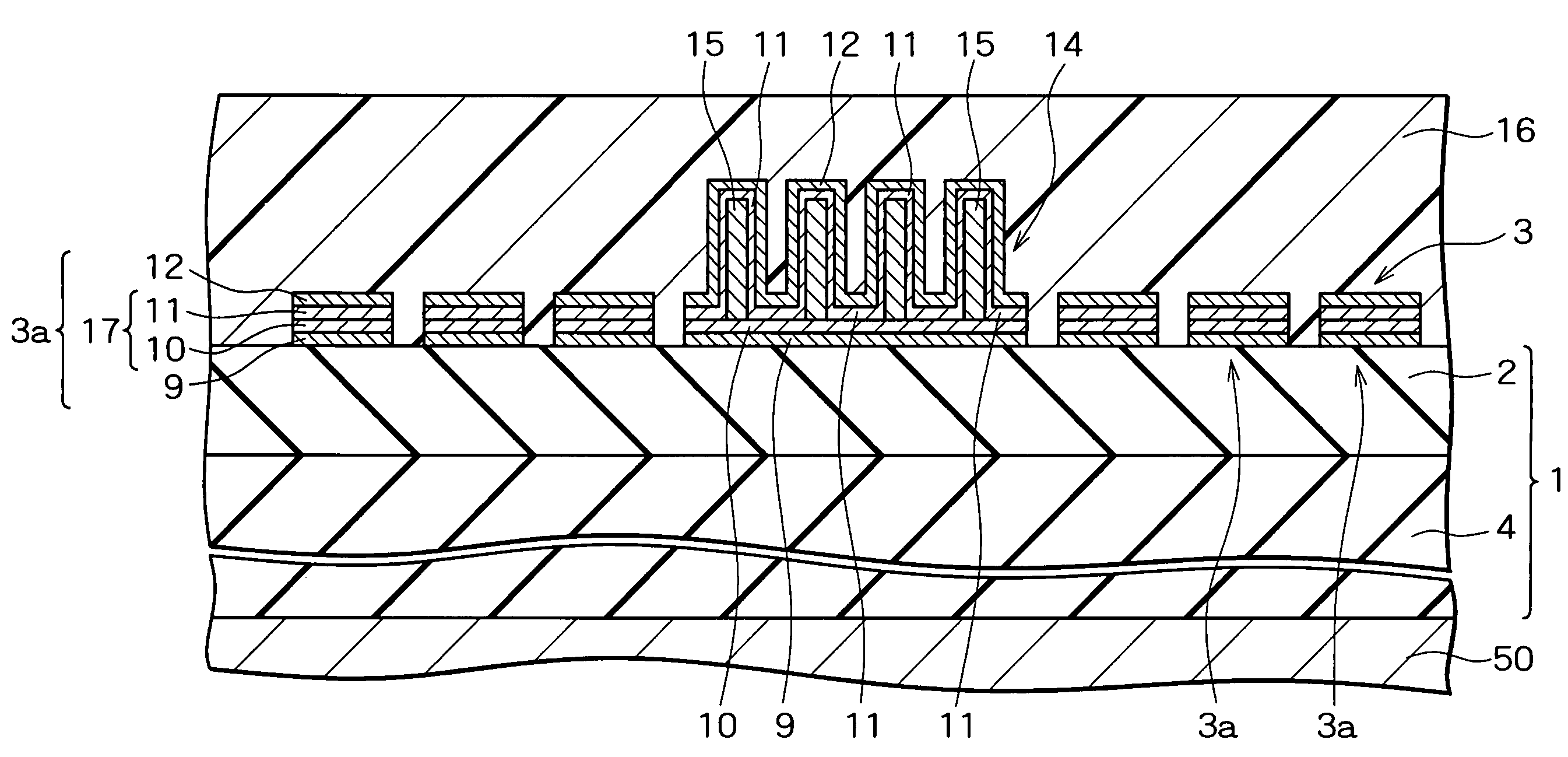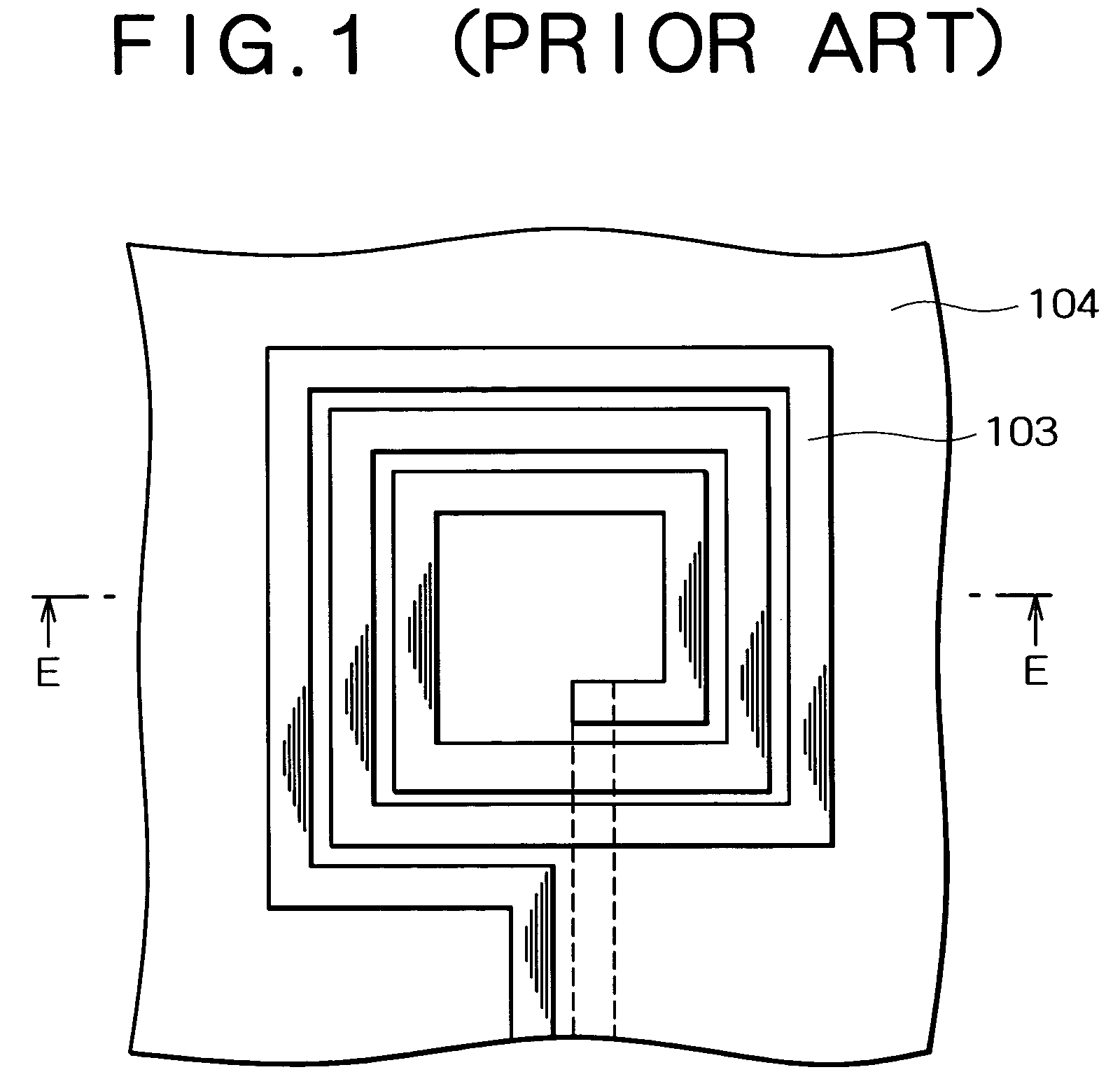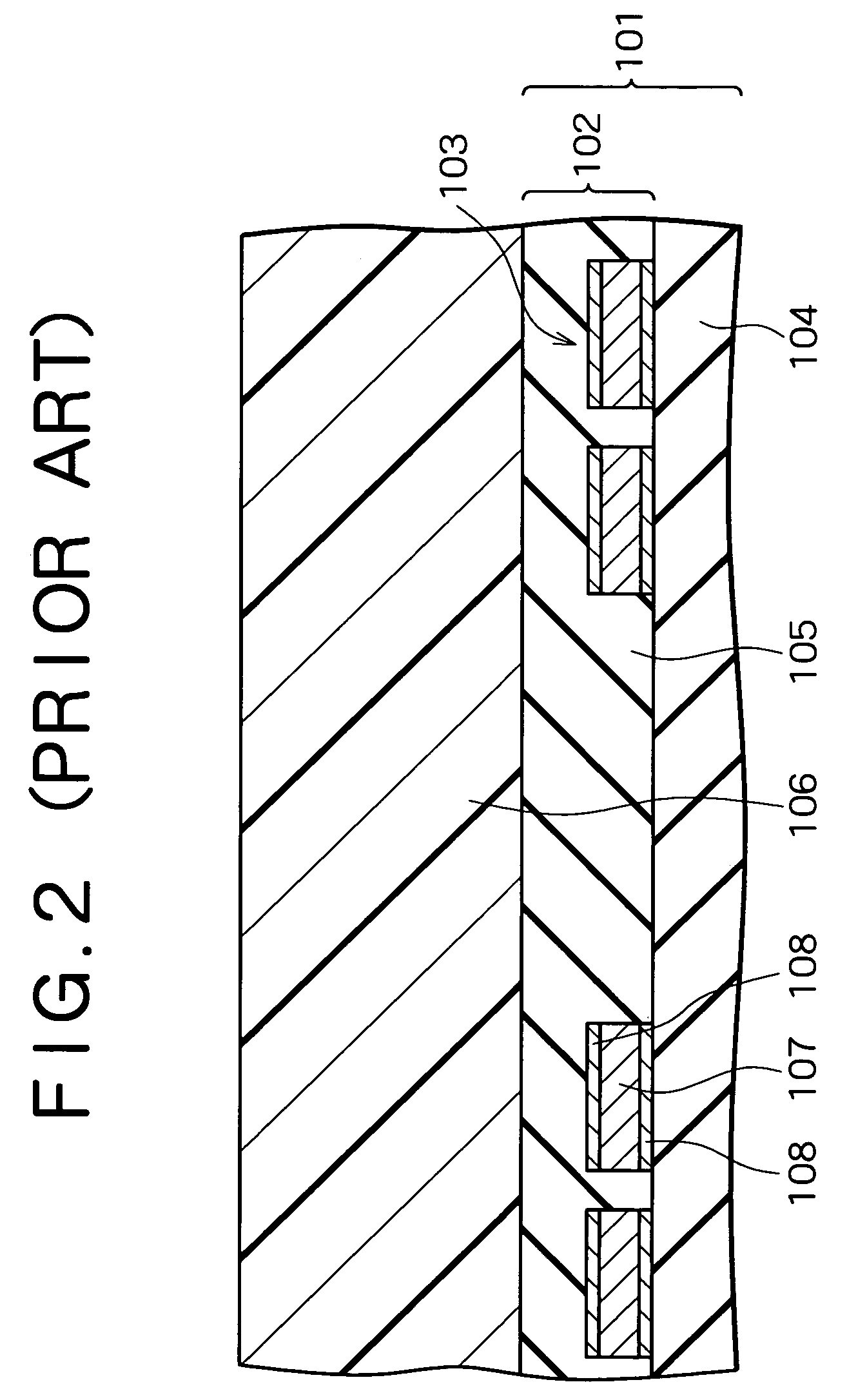Semiconductor integrated circuit and fabrication method thereof
a technology of integrated circuits and semiconductors, applied in the direction of transformers/inductance coils/windings/connections, inductances with magnetic cores, inductances, etc., can solve the problem of not being able to sufficiently miniaturize the semiconductor integrated circuit, and achieve the effect of improving the inductance and the q value of the inductor, reducing the area occupied by the inductor, and convenient magnetization
- Summary
- Abstract
- Description
- Claims
- Application Information
AI Technical Summary
Benefits of technology
Problems solved by technology
Method used
Image
Examples
first embodiment
[0030]Preferred embodiments of the present invention will be now described with reference to the accompanying drawings. the present invention will be described. FIG. 3 is a plan view of a semiconductor integrated circuit of the present embodiment, and FIGS. 4 and 5 are cross-sectional views of that semiconductor integrated circuit, taken along the line A-A and the line B-B in FIG. 3, respectively.
[0031]As shown in FIGS. 3 to 5, in the semiconductor integrated circuit of the present embodiment, a multilayer interconnection layer 1 is provided on a semiconductor substrate 50 that is formed of silicon, for example. The multilayer interconnection layer 1 is formed of a plurality of layers. On an insulating layer 2 that forms the uppermost layer of the multilayer interconnection layer 1, an inductor 3 is provided. The inductor 3 is a spiral inductor. The inductor 3 is formed of a single wiring 3a that is spirally arranged. The thickness of the insulating layer 2 is 1.5 μm, for example. W...
third embodiment
[0060]Then, as shown in FIGS. 10A to 10D, a TiW layer 9, a Cu layer 10, a ferromagnetic layer 15, a Cu layer 11, and a TiW layer 12 are formed on the insulating layer 2 in all areas in that order. The processes shown in FIGS. 10A to 10D are the same as those shown in FIGS. 9A to 9D in the third embodiment described above.
[0061]Next, as shown in FIG. 10E, a resist layer (not shown) is formed on the TiW layer 12. Then, using this resist layer as a mask, the TiW layer 9, the Cu layer 10, the Cu layer 11, and the TiW layer 12 are etched by wet etching, so that they are selectively removed and patterned. Wet etching of the Cu layers 10 and 11 can use SPM that is a mixture of sulfuric acid and hydrogen peroxide, while wet etching of the TiW layers 9 and 12 can use a hydrogen peroxide solution.
second embodiment
[0062]In this manner, a multilayer structure body 14 having a square shape is formed in a region corresponding to the inside of the inductor 3 in a plan view. The multilayer structure body 14 is formed of the TiW layer 9, the Cu layer 10, the ferromagnetic layer 15, the Cu layer 11, and the TiW layer 12. Then, an insulating layer 16 is formed of polyimide on the insulating layer 2 in all areas to embed the multilayer structure body 14. Thus, the semiconductor integrated circuit of the second embodiment can be fabricated.
[0063]The shape of the ferromagnetic core 15 is columnar, for example, as described in the first to fourth embodiments. However, the present invention is not limited thereto. The ferromagnetic core 15 may have any shape as,long as its height is equal to or larger than its width.
PUM
| Property | Measurement | Unit |
|---|---|---|
| thickness | aaaaa | aaaaa |
| inductance | aaaaa | aaaaa |
| thickness | aaaaa | aaaaa |
Abstract
Description
Claims
Application Information
 Login to View More
Login to View More - R&D
- Intellectual Property
- Life Sciences
- Materials
- Tech Scout
- Unparalleled Data Quality
- Higher Quality Content
- 60% Fewer Hallucinations
Browse by: Latest US Patents, China's latest patents, Technical Efficacy Thesaurus, Application Domain, Technology Topic, Popular Technical Reports.
© 2025 PatSnap. All rights reserved.Legal|Privacy policy|Modern Slavery Act Transparency Statement|Sitemap|About US| Contact US: help@patsnap.com



